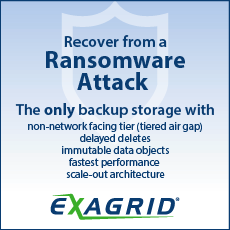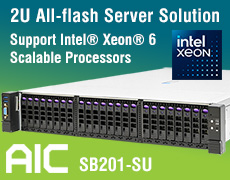HDD Trends for 2025: A Comprehensive Outlook
Opinion piece by Rainer W. Kaese, Toshiba Electronics Europe
This is a Press Release edited by StorageNewsletter.com on December 5, 2024 at 2:02 pm By Rainer W. Kaese, senior manager, HDD business development at Toshiba Electronics Europe GmbH
By Rainer W. Kaese, senior manager, HDD business development at Toshiba Electronics Europe GmbH
Hard disk drives, or HDDs, are a well-established technology for storing data that have been around for a long time. They are known for being able to hold a lot of data and for being relatively inexpensive when you look at how much they can store. This makes them a good choice for securing data in many areas such as data centers, for video surveillance footage, in gaming, and for cloud computing.
After reviewing my prediction from last year, I see that the balance between storage capacity and manufacturing costs continues to unfold. The industry has recognized the necessity for HDDs that offer substantial storage without incurring high manufacturing costs. With this driving factor, Toshiba has redefined it’s mid to long-term development roadmap. It is clear that HDD storage capacity has to be ‘cheap’.
Look at it this way: if you only add 4TB of storage and the manufacturing costs double, it would be unrealistic. On the other hand, if you stay at 20TB and manufacture it for less, it may help the business somewhat, but it would not meet the industry demand for additional capacity.
Despite a temporary reprieve due to increased SSD prices in 2024 due to the soaring demand for AI-capable infrastructure, the long-term competitiveness of HDDs hinges on their ability to provide ever-increasing capacity while keeping costs down. The target, therefore, is to increase the capacity at a constant cost.
Environmental responsibility and HDD recycling
Awareness around recycling old HDDs continues to grow, particularly as large-scale decommissioning of the first roll-out of cloud infrastructure begins. Looking at what was installed in the 2nd half of the last decade, a big wave of HDD material will come back for recycling, and the industry needs to decide what to do about it.
Previously, many types of HDDs were installed, and the industry was very fragmented regarding timings for when they were to be decommissioned. They were in many small batches and even single units. Currently, the industry has not experienced consequences in the value chain of the large-scale recycling setup. It comes as no big surprise because, over the last 5 to 7 years, when they installed several 1,000s of the same types of HDDs, what is happening is that data centers are decommissioning batches of several thousands of HDDs of the same type.
The physical weight of the cloud is tons of electronics with more than half of this from HDDs. However, HDDs are notably easier to recycle than other electronics because they only contain 2 or 3 different metals. If you compare how batteries are recycled, for example, there is toxic waste and complex compounds of materials to deal with.
With the increased importance of working with proper recycling organizations or value chains, cloud service providers are preparing for a significant influx of HDD materials needing recycling. In the coming years, it is anticipated that the HDD vendors will become an integral part of the process.
The Future of Storage Technology
Shingled magnetic recording (SMR) is a technique for writing data to an HDD whereby the data tracks partially overlap to increase the density and overall storage capacity per disk. This technology is poised for wider acceptance, allowing more data to be stored in the same physical space.
Up until recently, SMR has been a very niche technology that is only suitable for a few large data centers. CMR is like a 4.0-liter V8 engine with 300 horsepower and able to drive everywhere, whereas SMR technology is more like a 2.5-liter, 4-cylinder turbo engine. It is more compact and economical, but you may have some limitations in certain driving scenarios.
The cost of incorporating SMR technology and the inflexibility in terms of fast random writing workloads, did not justify the effort of attaining a small per cent increase in storage capacity. However, in the next gen of SMR-based HDDs, the storage capacity will go up by 25% or more for ‘free’ and be more power efficient.
Toshiba’s announcement of the MG 11 series, featuring a 24TB CMR HDD and a 28TB SMR HDD, showcases the potential for increased capacity without additional power consumption. The industry is expected to pivot towards SMR technology for most homogeneous workloads that write in large chunks, with optimized cache buffering absorbing short bursts of random writing, and CMR becoming a specialized option for Enterprise servers where you have different types of workloads.
The Role of Storage Expansion to Support AI‘s Growth Trajectory
AI’s requirement for extensive datasets for analysis, from automotive for autonomous driving, smart manufacturing, smart cities and other IoT-enabled industries, has led to a surge in storage demand at the enterprise level.
In the 60’s and early 70’s, researchers had the algorithms but not enough compute power nor storage to do much with them. By the beginning of the 90’s, there was enough compute power, but not enough data and storage was very expensive.
Today, with large-scale connected Enterprise storage and the cloud, the industry has access to enough data for the algorithms and GPU compute power. As AI relies on large-scale data analysis, the storage industry, including HDDs, is essential to support AI’s growth trajectory.
Enhancing the HDD Ecosystem
In the recent past, people had the perception that HDD storage is slow and can only be used for backup. However, in the last 2 years, we have demonstrated in our European HDD laboratory how to combine multiple HDDs to test function and performance. If you have 100s of HDDs in your large-scale storage system, you also have around a billion different configuration possibilities.
Remember the HDD is just one component, to make a storage system product you need several other components – the servers, software, cables, cards and more. In 2025, I foresee that close collaboration with our customers and these other components manufacturers will become an imperative.
Surveillance Storage Sees Unprecedented Growth
The demand for HDDs in surveillance applications continues to surge, with an increasing number of digital video recorder manufacturers entering the market. From relatively cheap surveillance systems for private homes, to medium priced surveillance systems to expensive surveillance systems for large-scale infrastructures like smart cities.
The sequential nature of video surveillance data and the fact that it is over-written at some point in time, makes HDDs the uncontested choice at all levels for surveillance storage. All of these systems use some form of AI-enabled analytics, which means you need more data on hand, so people are storing more data for longer periods of time.
Depending on the scale of the surveillance system, the locally connected digital video recorder could require from 2TB of storage up to 10TB. Large-scale central video surveillance systems, which store data in server rooms or even data centers, are using more and more generic storage based on Enterprise-level HDDs.
In general, I am seeing increased storage capacity needs at all levels, and this trend will continue. And again, a part of the Toshiba HDD lab is dedicated to video surveillance applications to support this expanding ecosystem. Toshiba has already established an extensive partner network of software vendors, and digital video recorder and IP camera manufacturers.
Raising Backup Awareness
Ongoing initiatives have been established to enhance consumer understanding of backup, yet awareness levels remain relatively low. Relying on cloud storage as a sole backup solution for your smartphone is inadvisable. It is prudent practice to perform regular backups using different methods.
At the very least, preserving a duplicate of one’s data using an alternative technology is a sensible measure. This could be a combination of cloud services or a mix of cloud and external storage, such as a USB-connected portable HDD like a Toshiba Canvio. It’s a small price to pay for peace of mind that your data is safe.
While wireless connectivity to an external HDD has attracted some attention, it will not be a trend for 2025, primarily due to cost factors. Nevertheless, portable HDDs with a USB Type C connector will become more of an expected standard.
Consumer Storage: Gaming and Media on the Rise
High-capacity Enterprise HDDs are becoming popular among gamers who need substantial local storage. These are not desktop or workstation HDDs, the growing trend of enthusiastic gamers incorporating enterprise-grade 16TB, 18TB or 20TB HDDs into their personal gaming PCs is noteworthy. This trend is also echoed by media professionals who are also putting in enterprise-level HDDs in their post-production workstations.
The huge amount of data, whether it be for video games or 4K or 8K raw video, can be dozens of terabytes. They prefer to store it locally as it would take too long to transfer the data to and from the cloud.
Although these 2 diverse segments are fragmented, the storage requirements are the same. And if you read any of the online reviews on HDDs, where the articles cover all the specs and details, there is always a huge ongoing discussion in the comments section – all the gamers and media professionals know all about enterprise-level HDDs. The HDD industry did not expect this trend to happen, but it is.
Summary
In conclusion, Toshiba’s outlook for 2025 includes a strategic focus on cost-effective capacity enhancements, the adoption of SMR technology, increased recycling efforts, and catering to the burgeoning demand from AI, surveillance, and consumer sectors such as gaming and media production. The company also recognises the growing importance of closer customer engagement and building a robust storage ecosystem with other component manufacturers.
More about Toshiba HDD technology and the portfolio of products available






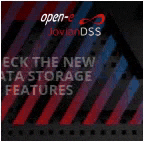

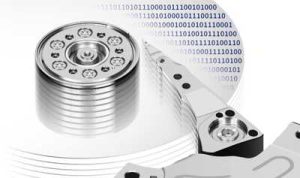
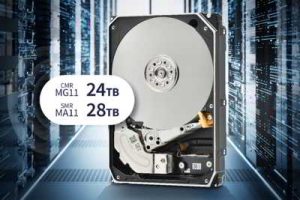






 Subscribe to our free daily newsletter
Subscribe to our free daily newsletter
